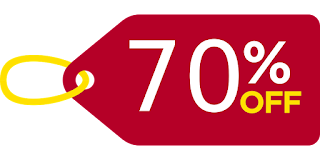This is the second part of chapter 10 since I have skipped the later parts of chapter 10 because all other concepts were related to economics. In this chapter, we will be discussing different kinds of pricing strategies excluding which we studied in chapter 10.
The first strategy which we going to study is Price Skimming Strategy. The concept of skimming is basically when we skim milk, fat, and milk separated from each other. The same analogy is applied over here. When is the product is introduced in the market it is priced higher and with the passage of time the Price decreases or the company tries to obsolete/finish that product so that new product can come with the higher price. The obsoleting of technology is known as Planned Obsolescence. For example, Samsung S9 is recently launched in the market at a price of 81,500 at daraz.pk. With the time goes on they will decrease their prices so that Samsung s10 can be launched at the higher price.
 |
| Planned obsolescence |
Another concept is Market penetration pricing strategy. Here you will have to set a low price in the market so that the product can easily penetrate in the market. The best example is of Q-mobile. They give reasonable mobiles at low cost and their main target market is Rural areas of Pakistan.
Product mix pricing strategies consists of Product line pricing (different prices in the same product line), Optional Product pricing (In Samsung s8, if you want to buy a Virtual Reality goggles you need to pay extra, it is an option for the customer or extend the warranty of your product, you need to pay higher). Captive product pricing is the strategy where you set the price of the product which is compulsory to be used with the actual product for e.g. in coffee machine (expresso) you need to have the expresso coffee shots with you so that you can make coffee from it). By-Product pricing strategy where the price is set for the by-product for e.g. In the extraction of the petroleum, you get petrol, diesel, kerosene oil. In this case, High Octane petrol will be priced higher and other are by-products which are priced at a lower cost to be available for the customers at different prices. Bundle pricing, a strategy where you bundle the product and price them accordingly, like in Lux '3' soaps are wrapped in one and are priced less.
Next part is about Price Adjustment Strategies. They consist of 1). Discount and allowance pricing (for example in airline industry if you buy tickets early you can get good price (low cost) or sometimes you can get early bird discount ( the early you get the low price you have). 2) Segment price (a strategy where you segment the audience and charge them differently for the same product or service for e.g. in bus travelling you can get student discount or senior citizen discount. 3). The most common is Psychological pricing strategy (for example a product which is of $ 20, I write $19.99, so in the human psyche, the product lies in the category of 19, not 20. This is one strategy, another one is the higher the product is charged people think it has good quality.) 4) Reference pricing, a price which is already in the mind of the customer, they can get a reference from the competitors as well. That he is selling at this price why are you selling at a higher price? Promotional Pricing, a strategy where we can see different promotions or discounts or sales or "buy one get one free" in big banners. Dynamic Pricing, a strategy where you continuously changing prices according to the market demand. It happens in Online medium because it is easy to change over there. For example, Daraz.pk changes prices 4 times a month of a certain product by seeing their competitor homeshopping.pk. Lastly, International pricing, where a company needs to set the price according to the economic and legal system when they are expanding their operation in a new country. Like Khaadi London charges different amount of prices in Uk than in Pakistan for the same product. Here company needs to focus on buying power of the customers as well.


For many marketers, a very big question often comes down to Facebook Ads versus Google Ads. After all, these are the two leading platforms for online pay-per-click (PPC) advertising. However, it can actually be beneficial to include both in your marketing strategy. Both platforms have unique strengths and weaknesses. The key is to understand which platform exceeds in which areas. Learn more here:https://ppcexpo.com/blog/facebook-ads-versus-google-ads
ReplyDelete